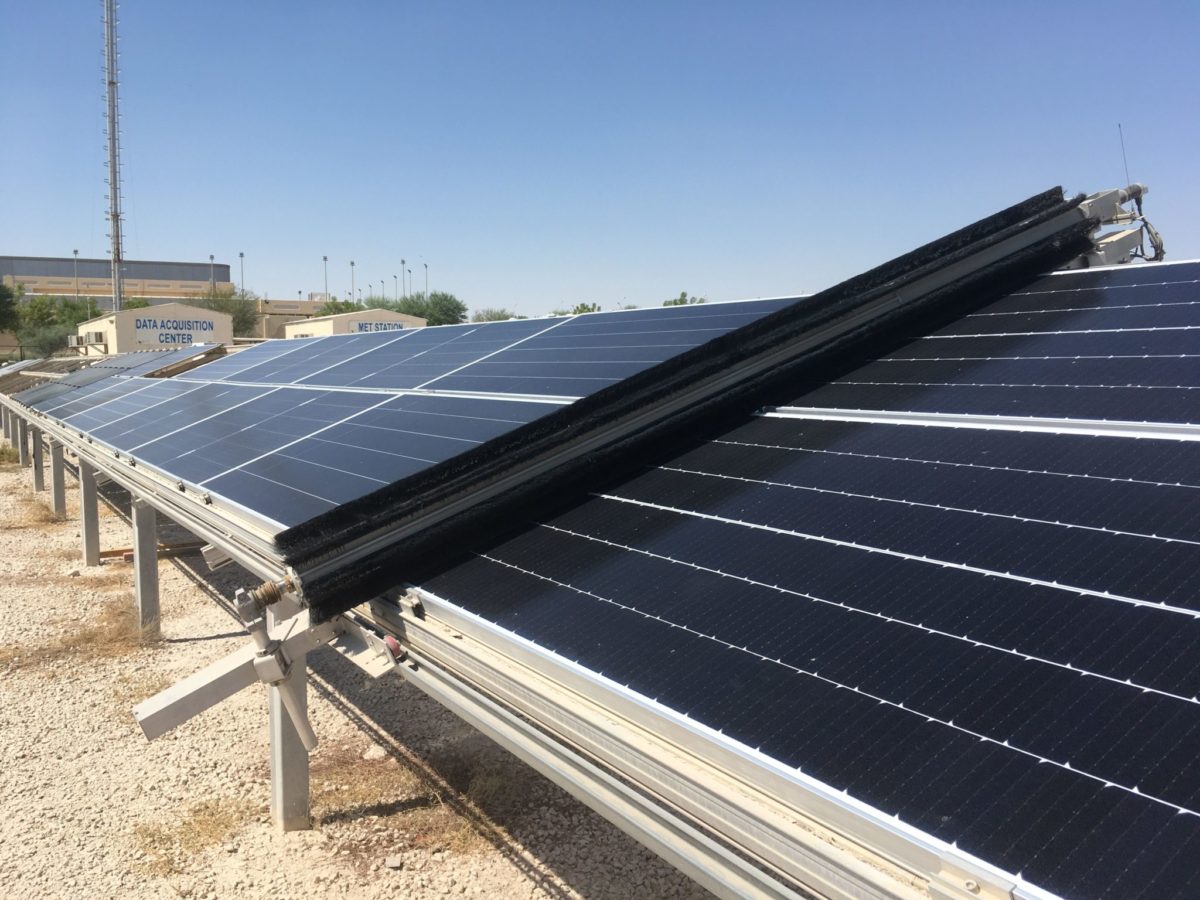From pv magazine Global
Scientists at the Qatar Environment and Energy Research Institute (QEERI), part of Hamad Bin Khalifa University (HBKU), have tried to assess the mechanical stress to which solar modules are exposed during robotic cleaning operations.
“One specific concern is vibration – how much do the modules shake as a robot brushes them,” researcher Ben Figgis told pv magazine. “We found that the key factor was how large the modules were and that, regardless of differences in glass thickness and framing, modules with similar sizes tended to exhibit roughly the same amount of vibration.”
The study identifies the threshold of deflection at which solar cell damage can occur. The scientists set up an experimental setting at the QEERI testing facility in Doha and ran several tests on five crystalline silicon panels and on a thin-film module based on copper indium gallium selenide (CIGS) tech. All of the panels were south-oriented and mounted in landscape orientation, with a tilt angle of 22 degrees.
“The modules had various frame thicknesses, so to achieve the same height of the module upper surface spacers were added beneath the frames of some modules, at the clamps,” they explained. “The thin-film CIGS, module F, was mounted with clamps on vertical metal profiles, also bringing its front surface to the same height as the other modules.”
For their experiments, the academics used a linear rotating dry-brush robot provided by Saudi manufacturer Nomadd Desert Solar Solutions. “The vibration results observed in this study are particular to the robot used, and other robots are likely to produce different vibrations,” they warned. “Each module was measured three times, i.e. with three robot passes in one direction, on non-windy days.”
The research group found that displacements of the modules from their neutral position, or deflection magnitudes, under robot cleaning were “very small” for all panels.
“There was moderate consistency in the severity and number of vibrations over the three robot passes that were conducted for each module,” they said, noting that the robot does not pose a threat to the modules. “Overall, it seems the main factor in a module’s vibration amplitude is its size.”
The scientists also determined that an hour of strong wind made the panels vibrate more than when exposed to the cleaning robot.
“This reinforces the earlier conclusion that this particular robot seems unlikely to be a risk for flexing-related PV module degradation, because natural wind has a stronger influence;” they said.
They presented their findings in “PV module vibration by robotic cleaning,” which was recently published in Solar Energy.
This content is protected by copyright and may not be reused. If you want to cooperate with us and would like to reuse some of our content, please contact: editors@pv-magazine.com.









By submitting this form you agree to pv magazine using your data for the purposes of publishing your comment.
Your personal data will only be disclosed or otherwise transmitted to third parties for the purposes of spam filtering or if this is necessary for technical maintenance of the website. Any other transfer to third parties will not take place unless this is justified on the basis of applicable data protection regulations or if pv magazine is legally obliged to do so.
You may revoke this consent at any time with effect for the future, in which case your personal data will be deleted immediately. Otherwise, your data will be deleted if pv magazine has processed your request or the purpose of data storage is fulfilled.
Further information on data privacy can be found in our Data Protection Policy.